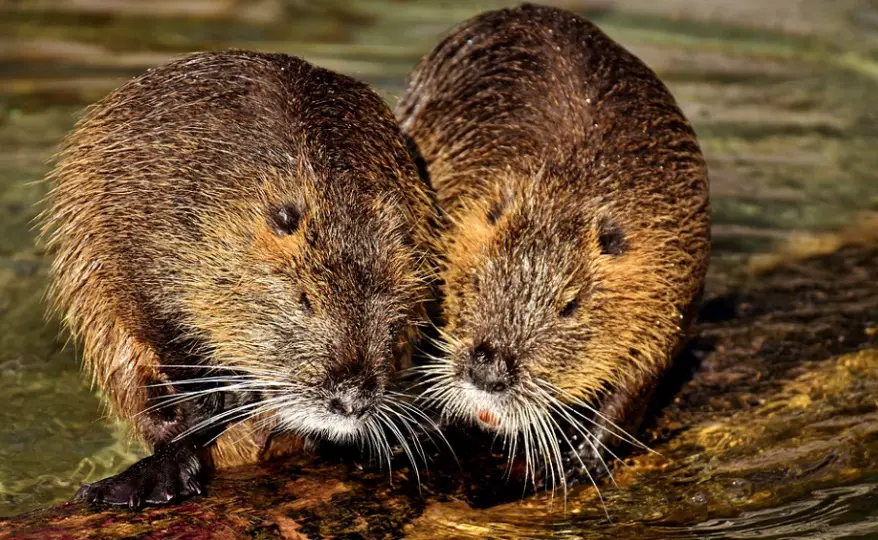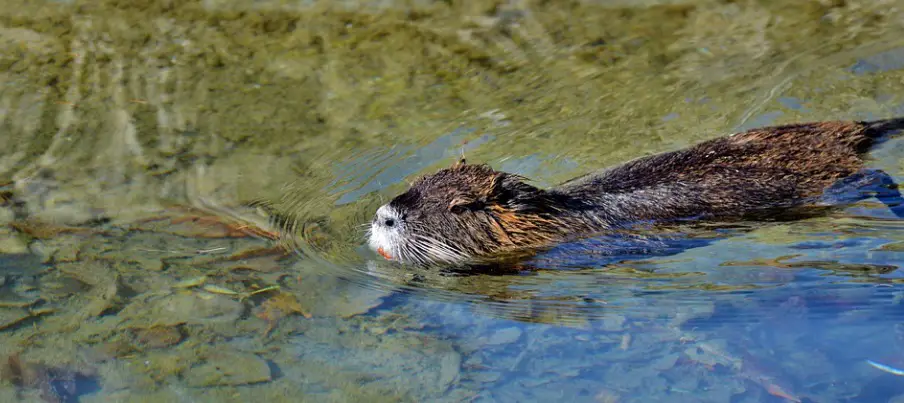Table of Contents
Nutria Rat: All You Need To Know
The Nutria rat is an aquatic omnivore which belongs to the kingdom of Animalia, phylum Chordata, and class Mammalia. Its genus is Myocastor and its species is Myocastor coypus. Its length is 40 to 64 cm plus tail and it weighs about 7 to 10 kg. It lives near freshwater regions, with a lifespan of 8 to 10 years.

Nutria Rat Description
The nutria rat (Myocastor coypus), commonly known as the swamp rat or the coypu, is a big rodent that prefers to live near waterways. Nutria rats are native to South America, but they have spread across North America because of the fur trade. They have spread around the world and are classified as invasive species because they damage the natural environment.

Nutria rats are big rodents that are almost the same size as a raccoon. On the exterior, the nutria’s fur is made up of long, shaggy yellow or brown hair. Their undercoats are considerably more attractive, and they are frequently caught or farmed for their undercoats, which are utilised in the fashion business.
Nutria rats have long tails and big, orange front teeth, in addition to their scruffy exterior coat. They are mostly aquatic, possessing webbed hind feet and powerful swimmers. These rodents like to live near riverbanks or other freshwater environments like ponds, lakes, and wetlands.
They are also skilled diggers and prefer to live underground. These rats consume primarily water plants and foliage, although they have also been observed eating invertebrates like snails and mussels.

Although Nutria rats are primarily herbivorous, the amount of food they consume can have a significant impact on an environment. Every day, these massive rats can consume up to a fifth of their body weight in plant matter! These rats breed quickly, attaining sexual maturity at the age of five months.
The rats may reproduce up to seven times each year, producing five to seven young in each litter. A woman can have up to 200 children in her lifetime! Because of their high rate of reproduction, populations may quickly grow, which is why they are such effective invading species.
Escapees from fur farms have the potential to establish new populations in non-native regions, causing plant degradation and wetland habitat destruction. They also disrupt flood-control systems and spread illness. Several animals, including bald eagles, hawks, cottonmouth snakes, garfish, dogs, turtles, and alligators, feed on Nutria rats.
Nutria rats, on the other hand, are nocturnal, making it harder for diurnal animals to pursue them. They will hide in their burrows throughout the day to avoid predators. Nutria rats are also hunted by humans for their fur and, in some cases, their flesh.
Fun Facts About Nutria Rat!
These big rodents are considered pests and are harmful to the non-native habitat they have encroached upon. As such effective invading species, they must have a variety of adaptations that serve as good examples of biological principles for us to investigate. Let’s look at it more closely.

Nose and Mouth Valves
Nutria rats spend a lot of time swimming and searching for food in and beneath water. They have a variety of adaptations that allow them to exist in this semi-aquatic environment. The existence of valves in the nose and mouth of these rats is one of the most intriguing adaptations.
These valves may close when the rats dive and are immersed underwater, preventing water from entering the orifices. They also have the ability to hold their breath for up to five minutes!
Nutria Rat: a Successful Invasive Species
Nutria rats have established many populations across North America and Europe, making them a successful invasive species. Humans had caught and transported them to these regions in order to construct farms or breeding colonies for use in the fur trade. Invasive species are creatures that are not native to a certain area and cause significant ecological damage.
Nutria rats exhibit all of the hallmarks of an invading species. They are generalists, eating a broad variety of plants and all parts of them, from leaves to roots and shoots. These rodents have a long lifespan and a high rate of reproduction. They also have a low number of predators.
Although nutria rats will be eaten by a variety of animals if they come upon them, their nocturnal lifestyle allows them to evade predators who hunt during the day. Non-native habitats are severely harmed by Nutria rats.
They are known to affect agricultural products like rice and sugarcane in specific states, in addition to damaging riverine and wetland habitats. Because they can do so much harm, the Louisiana Department of Wildlife and Fisheries now permits anybody with a hunting licence to kill up to five of them each day, which only goes to show how big of an issue they are.
Humans are to blame for the proliferation of many exotic species throughout the planet! Humans, for example, brought zebra mussels to the Great Lakes, which have spread like wildfire and reduced the population of native pearly mussels. Japanese knotweed, grass or Asian carp, and lionfish are examples of invasive species in the United States.
Mammary Glands
Nutria rats spend a lot of time in the water, and many of their adaptations allow them to live a semi-aquatic existence. One of these rodents’ most fascinating adaptations is the ability to feed their young while floating in the water.
Females, like other animals, have mammary glands, which allow them to produce milk for their offspring. Nutria rats have four pairs of mammary glands on the side of their bodies rather than on their bellies. While the mother is floating, the young can eat with their snout above the water’s surface.
Nutria Rat Citations
- Body size and gastrointestinal morphology of nutria (Myocastor coypus) reared on an extensive or intensive feeding regime. J Anim Sci. 2018 Sep; 96(9): 3728–3737.
- Histopathological findings in wild Nutrias (Myocastor coypus) with Capillaria hepatica infection. J Vet Med Sci . 2017 Jan 10;78(12):1887-1891.
- Why can’t rodents vomit? A comparative behavioral, anatomical, and physiological study. PLoS One . 2013 Apr 10;8(4):e60537.







